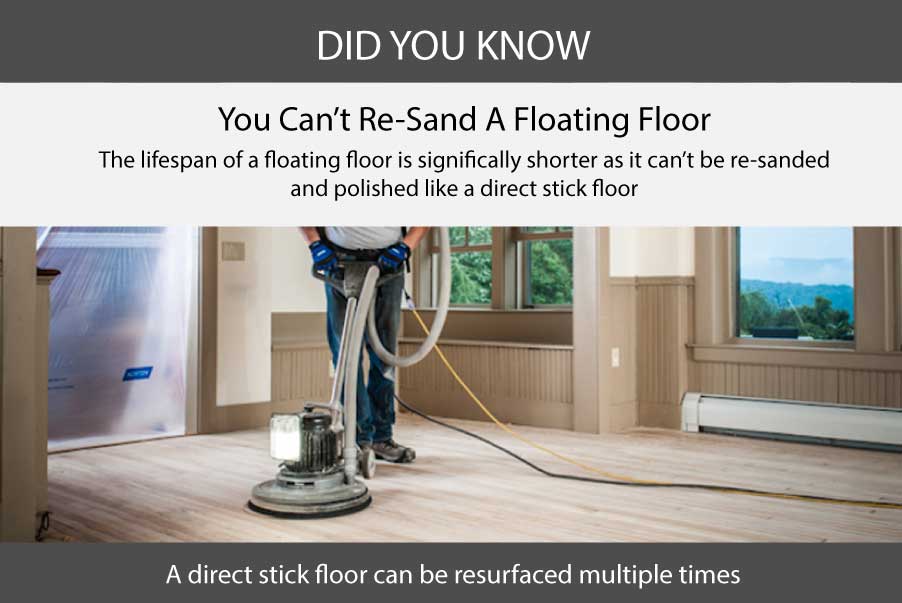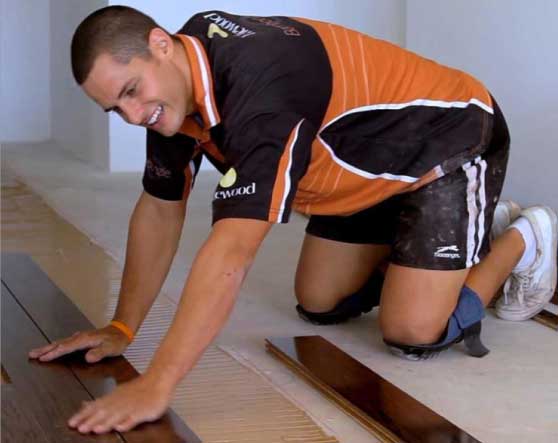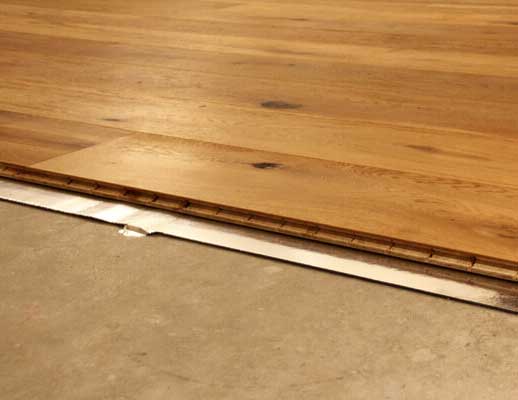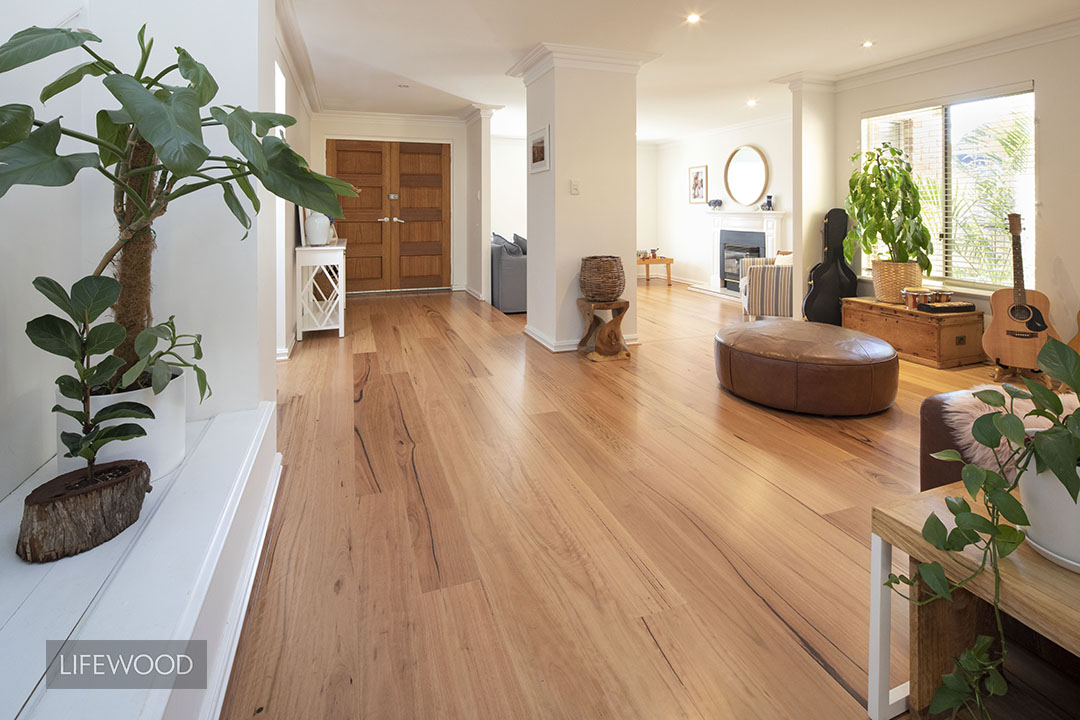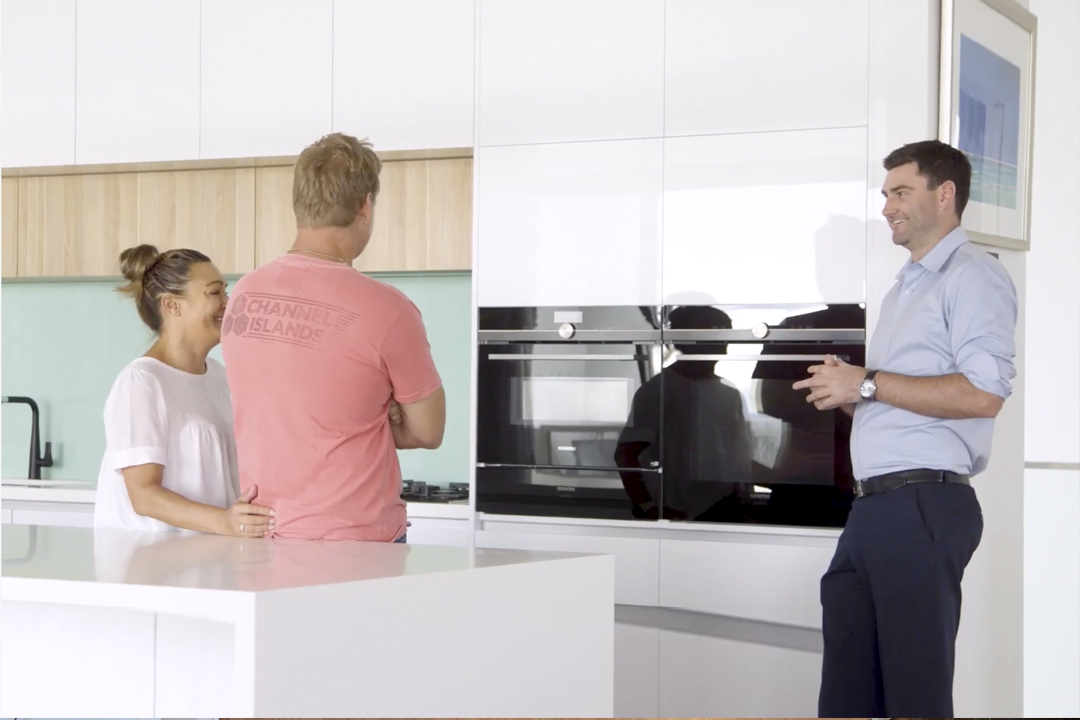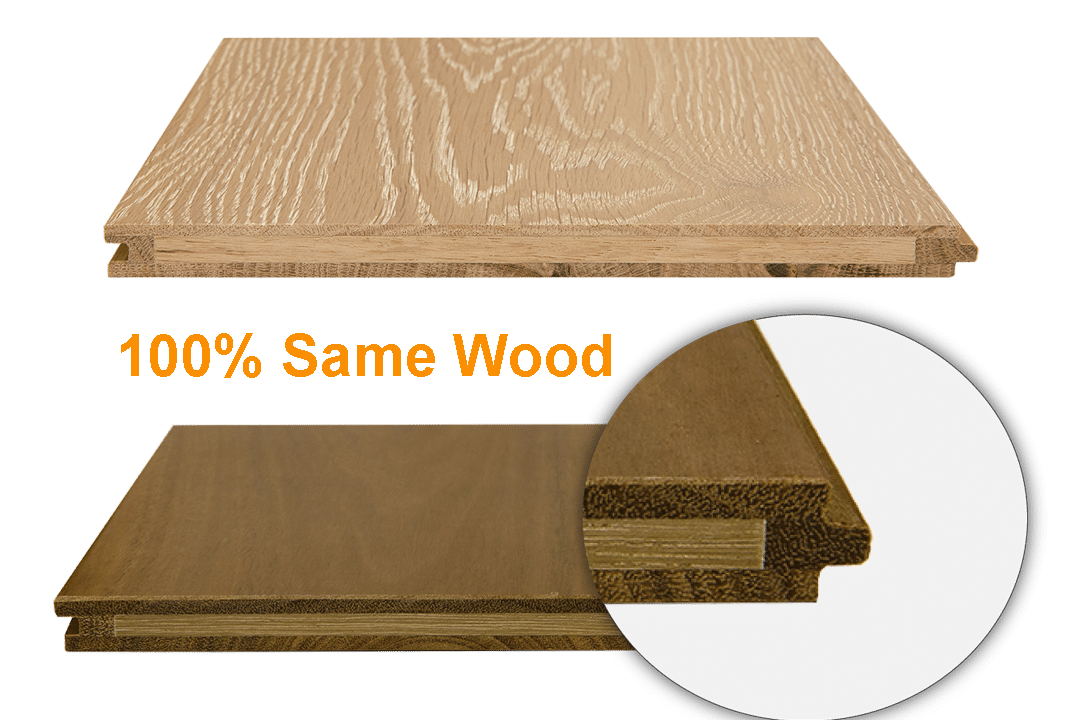What’s The Best Timber Flooring Installation Method?
Both timber flooring installation methods are great and ideal for certain situations. But be aware as many floorboard retailers will sell you what’s best for them, not having your best interest in mind.
In this quick overview, you are going to learn the difference between these two timber flooring installation methods, and which one is more appropriate based on what you want to get out of your floor.
Timber Flooring Installation Method 1: Direct Stick
A direct stick floor is a common way to install a timber floor by gluing each individual floorboard directly to the concrete substrate, or a timber substrate in older styled homes.
If you are installing solid timber, these boards will also be nailed down as well as glued to restrain the floor from cupping. If you are choosing an engineered floor you won’t have to nail the boards as engineered flooring doesn’t move like a solid timber flooring.
Timber Flooring Installation Method 2: Floating
A floating floor is a method of installing where the boards are not glued or adhered to the substrate layer in any way.
Floating floors are joined together with glue-less tongue and groove clicking systems, or just glued together and laid on a bed plastic layering and foam underlay. This underlay will differ in quality and thickness, but fundamentally this underlay is designed to offer a cushioning effect and a moisture barrier for the floating surface.
If your timber flooring installation is without foam it can increase the risk of damaging the boards and cause the floor to creak as the raw elements grind against each other.
Why choose to direct stick a timber floor?
If you are purchasing a floor which is going to be a permanent, long term feature of your home or office then you should choose to direct stick your floor.
The timber flooring installation process of direct stick is a craft and needs to be done by a highly skilled professional. The fact that these floors are stuck down with very strong glue means there isn’t much room for error and it’s much harder to fix and replace boards which are laid incorrectly.
The benefit of direct sticking your floor is you can sand and polish the surface multiple times. From our experience a solid timber floor will typically be re-sanded every 10 to 15 years to preserve it’s look and feel.
Not only does a direct stick installation last a lot longer, it’s also a lot more durable and less susceptible to water damage. Again, the trick to direct stick is making sure it gets installed by a skilled craftsman as it will require a lot more prep work. The sub-layer must be cleared of all protrusions, sealed with moisture barrier, and in some cases grinder flat. It needs this extra care from the beginning as it truly is a long-term timber flooring installation method.
Why choose to float a floor?
This installation technique is used primarily by carpet companies selling lower end products. Floating floors are easy to install, they don’t require much skill to lay and if you make a mistake you can easily rip up individual boards and replace them.
Floating floors are perfect for temporary flooring requirements. Ideal reasons for choosing to float a floor would be if you didn’t own the location and/or have a very high traffic environment such as a store of office. Floating floors have a maximum footfall noise (hollow echo) caused by its soft underlay. This can be quite annoying when installed in residential environments.
A big benefit of a floating floor is that it doesn’t need a lot of prep work before laying. If the sublayer is contaminated by drops of paint, glue or isn’t perfectly level, you can cancel these defects out with the foam underlay. If you have a big lump in the concrete you will have to grind it down, but if you have hollow areas in the floor most installers will float straight over it and it typically won’t affect the floors performance.
Pros of a Direct Stick Floor
- Looks and feels amazing
- Sounds real – no hollow echo noise
- Holds value and considered an asset
- Can sand and polish multiple times
- More resistant to water when installed correctly
- Installed to last a long time
Cons of a Direct Stick Floor
- Requires more skill to install
- More detailed surface preparation will be needed
- More difficult to change and replace individual boards
Pros of Floating Floor
- Quick to install
- Doesn’t require highly skilled professionals
- Easy process to repair and replace boards
- Cheaper all-round process
- Tough wearing surface layer
Cons of Floating Floor
- Can’t sand and polish
- Doesn’t hold its look for a long period of time
- Highly susceptible to moisture – new hybrid boards will minimise moisture damage
In conclusion, the question you need to ask yourself before deciding on direct stick or floating is…
Am I looking for a quick fix floor that will do the job for now, or is my floor an investment for the future?
A good quality, natural timber floor that’s been direct stuck is an investment for your home that will look amazing and last generations. Yes, floating floor will look amazing too, but struggle to keep its look and feel for nearly as long as a direct stick floor.

